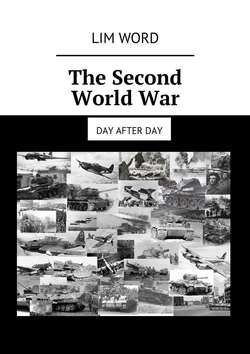Читать книгу The Second World War. Day after day - Lim Word - Страница 4
Armed conflict between the USSR and Japan in the Khalkin-Gol
ОглавлениеIn the Japanese version, with Russian transcription, it sounds like “Nomon-khan jiken” – “The incident with Nomon Khan,” by the name of one of the local heights. Some historians consider fights at the river Halkin-Gol the Second Russian-Japanese war.
Since the twenties of last century Mongolia is a protectorate of the USSR and, nominally – a socialist country. Attacks on it are already considered a matter of the Soviet Union. Therefore, when in May 1939 militaristic Japan, unhappy with the demarcation of the border with the Mongolian People’s Republic, attacks Mongolian outposts near Lake Khasan, according to the Protocol on Mutual Assistance of March 12, 1936, the Red Army interferes.
Ground-based battles along the river Halkin Gol, considered by the Japanese as the “right” border with their puppet state on the territory of China (“above” Korea and more than three times), are conducted with varying success. The main events unfold in the air. Since May 22, for two days the Soviet fighter regiment is losing 22 I-15s, the Japanese – one. On an urgent basis, the pilots who showed up in Spain, as well as the newest I-16 and Chaika fighters, are called to the place of the conflict. From June 22 to June 28, the Japanese Air Force lost 90 aircraft, the Soviet Air Force lost 38 aircraft.
Since July 2, the Japanese ground group is moving into a large-scale offensive near Mount Bayan-Tsagan. In the battles participate up to 400 tanks and 300 aircraft from both sides at a time. Soviet troops quickly commanded by G. Zhukov. He manages to rectify the situation, although L. Beria sends the 1st rank commissioner L. Mehlis (a serial killer of the higher officers of the Red Army) to “check” the commander of the group of troops. The army commander’s psyche is stronger.
The Japanese side is losing 9,000 killed, almost all tanks and most of the artillery.
At the end of July, the intensity of military operations on the ground is declining. Again, fighting is in the air. Japan loses 67 aircraft, the USSR – 20. This is a prelude to a decisive blow by Soviet and Mongolian troops on August 20. The forces of the parties: the USSR-Mongolia – 30 thousand people, 500 tanks, 580 aircraft. Japan – 20 thousand fighters, 120 tanks, 450 aircraft. The army of the country of the Rising Sun is surrounded, crushed and destroyed. The day of the truce, on September 15, is crowned with an impressive air battle – 207 Soviet aircraft against 120 Japanese. Finally, “de jure”, the conflict ends in May 1942; the parties find a compromise on the basis of some geographic map found in the archives.
Losses of the parties: the USSR – irretrievable losses of 10 thousand people, 250 tanks, 210 aircraft. Japan and the Union of Manchukuo, according to the averaged data – 36 thousand people, 300 tanks, 400 aircraft.
